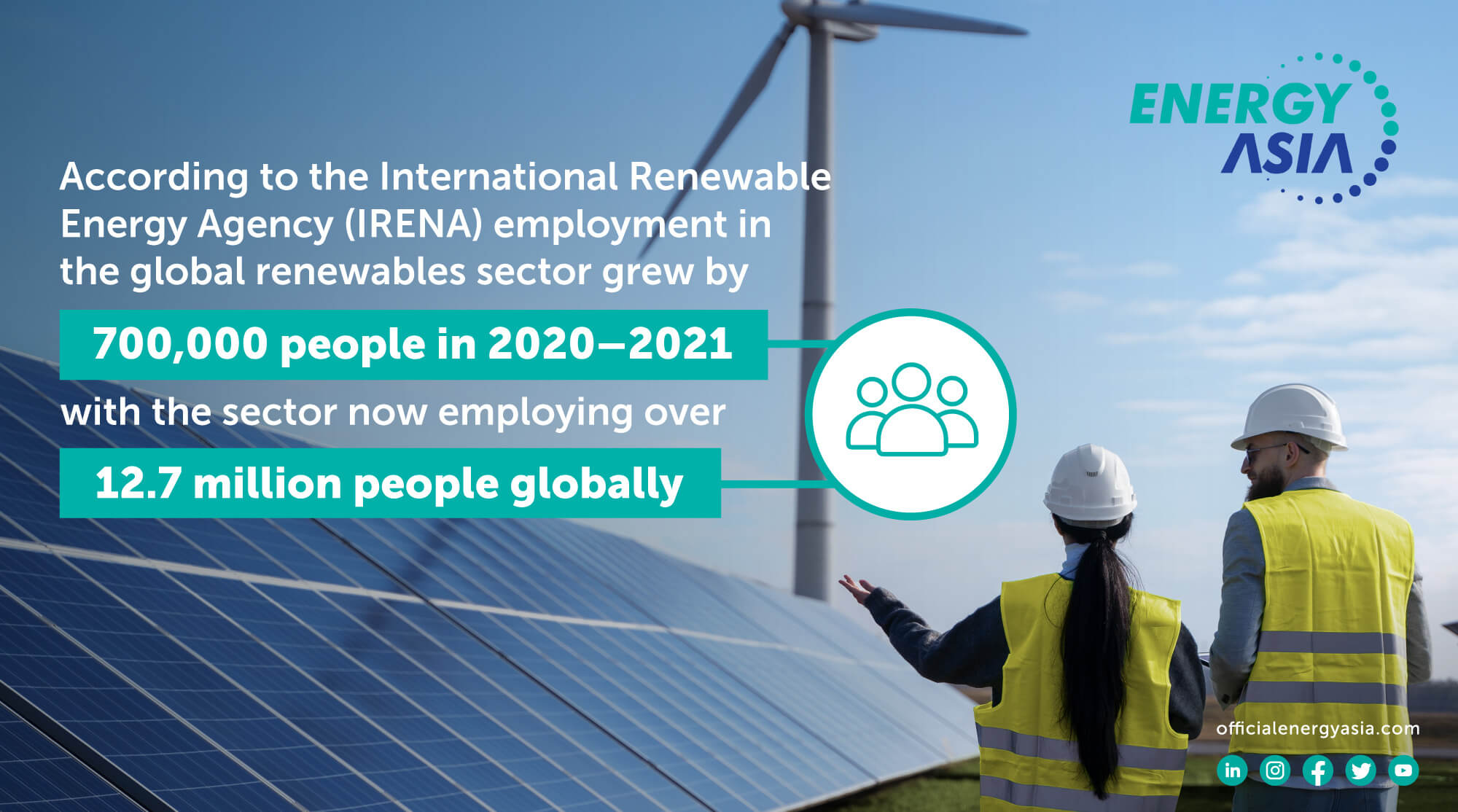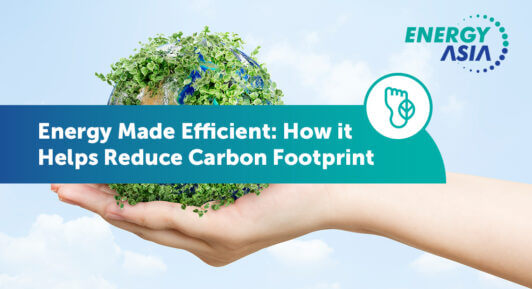Green Jobs: Accelerating Growth and Energy Transition
The energy transition offers a remarkable transformation of our global economy, as nations and regions look to disconnect aspirational economic growth from carbon-generating activities.
Over the last two decades, major economies across the globe have successfully delivered economic growth without direct correlation to CO2 emissions. The United States—the largest global economy—saw gross domestic product (GDP) per capita rising by over 20% between 2000 and pre-pandemic 2019, during a period where consumption-based carbon dioxide (CO2) per capita decreased by almost 40%.
While there’s still more work to be done to deliver a locked-in net-zero pathway, the US’ two-decade story of carbon decoupling is a powerful argument for the future of markets in the Asian region, as these high-growth economies seek to deliver equitable opportunities while delivering a just energy transition. That means better jobs and opportunities for citizens, as part of a net-zero future for the region.
Asia’s opportunity
While mature economies like the USA are hinting at sustained decoupling of GDP and emissions, Asia remains a high-growth story with complex market dynamics to address. But in doing so, it is set to embrace a remarkable opportunity to unlock value through new green jobs and opportunities across the region.
Asia’s recent history is one of growth, but with that has come growing carbon emissions. Consumption-based CO2 per capita has increased by over 80% in the two decades from 2000 to 2019, as this growing region continues to energise economic growth for nations and citizens. Balancing this growth with the region’s net-zero targets will be a turning point for nations and markets in the race to become carbon-neutral.
The projected economic opportunity unlocked by this transition is huge. In its seminal 2020 report, The Future of Nature and Business, The World Economic Forum identifies that moving towards a nature-based economy could unlock up to US$10.1 trillion in annual business value, and create 395 million jobs by 2030— equivalent to around one-fifth of the total projected increase in the global labour force between now and 2030.
This huge economic value of these opportunities is equivalent to 14% of Asia Pacific’s GDP in 2019. The region is also projected to capture around 43% of the global US$10.1 trillion value, and 232 million jobs, created by the same business opportunities.

Energising job opportunities
Green energy jobs and renewable energy careers are a clear area of opportunity being unlocked by this once-in-a-generation energy shift. While the true scale of that opportunity is still becoming clear, the Future of Nature and Business Report estimates that improvements to the wider extraction, production, manufacturing of energy and materials could significantly reduce environmental impacts and open up to 87 million new jobs by 2030.
These jobs aren’t just hypothetical—the explosion in renewable energy jobs is already apparent across Asia and the global economy. According to the International Renewable Energy Agency (IRENA) employment in the global renewables sector grew by 700,000 people in 2020–2021, with the sector now employing over 12.7 million people globally.
IRENA’s Renewable Energy and Jobs Report highlights the huge growth in green energy jobs, with over 4.3 million people working in solar, 2.4 million in hydropower, 2.4 million in biofuels, and 1.3 million in wind power.
Almost two-thirds (63.6%) of these jobs are located right here in Asia. Almost eight out of every ten jobs in solar PV are also located in Asia, largely due to dominant manufacturing industries in nations like China, Malaysia, India, and Vietnam. According to IEA analysis, Asia-Pacific plus China and India manufacture more than 90% of the world’s solar PV modules.
The story of other renewable energy technologies also reveals Asia’s commanding position, Asia accounts for 57% of wind power employment. India, China, Vietnam, and Pakistan are all major players in hydropower employment, while Indonesia, Thailand, Malaysia, and India are all significant players in biofuel production.
Expanding and emerging renewable energy opportunities will continue to advance employment across the world in the decade ahead. IRENA estimates that on a current trajectory, the number of workers employed in the energy sector could reach 106 million by 2030. A more inspired energy transition could open up wider opportunities, with 139 million energy sector jobs by 2030 under a more ambitious scenario, including 74 million jobs in expanding energy efficiency, electric vehicles, power systems, and hydrogen industries.
Renewable energy will be the fulcrum of this low-carbon transition, reaching 17.4 million jobs under current commitments, or a substantial 38.2 million under a more ambitious energy transition scenario.
With the lights shining bright on Asia’s renewable energy future, this remarkable transition can not only transform jobs, but transform lives across the region and beyond.
Join us at Energy Asia as we build the connections to help power up this opportunity, and deliver pragmatic and actionable solutions for a just energy transition across Asia.
Find Out More About Energy Asia, 26-28 June, 2023, Kuala Lumpur, Malaysia













